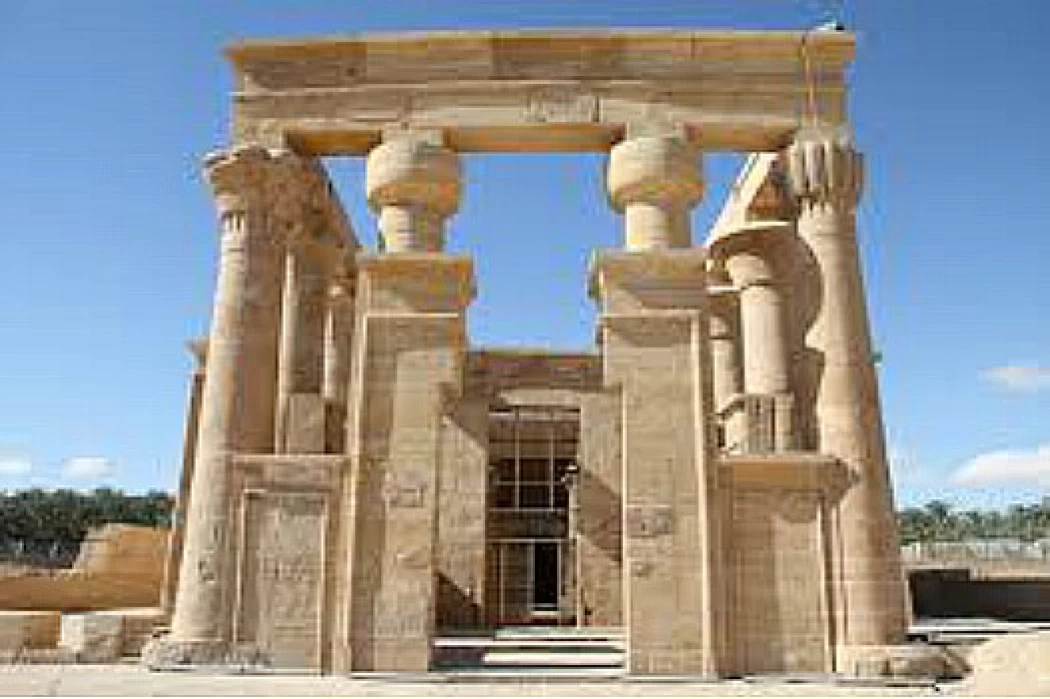
The Temple of Hibis at Kharga Oasis
The Temple of Hibis at Kharga Oasis
The Temple of Hibis in the New Valley is one of the oasis' main tourist destinations, located 3 kilometers north of the town of Kharga. “Hibis” is the ancient name of the town of Kharga and the Greek name for the ancient Egyptian word Hibit, meaning ‘plough’. This name was given to the town of Kharga and to the temple itself, as the ancient town of Hibis was located on an area of around 1 square kilometer at the southern end of Jebel al-Tair, which surrounds the northwestern side of the Kharga oasis, close to Tell al-Nadoura.
The ancient city of Hibis was a crossroads for most of the major trade routes linking the Kharga and Dakhla valleys and between Egypt and Sudan via the Darb al-Arbaeen road. Hibis is the only surviving stone temple from the Saudi-Persian period of the 26th and 27th dynasties (660 - 330 BC) under the reigns of kings Bismatik II and Ihab-Ra (Ypres), and most of the temple's inscriptions were completed during the Persian period of the 27th dynasty under king Dara I (522 BC). The temple most probably rests on the foundations of a Middle or New Kingdom temple.
He explained that the general temple is a rectangular sandstone building some 45 meters long and 19 meters wide, apart from the gates and marina, the axis of the temple runs east-west, similar in layout to the Egyptian temple of the New Kingdom, which consisted of (the building - the open courtyard - the hall of columns - the Holy of Holies).
It is noteworthy that the first thing that a visitor to the Temple of Hippos will see is the marina that was located at the edge of the ancient lake, which was located in front of the temple from the east, which was used for ceremonial purposes related to the temple and the ancient city of Hebt, and this marina dates back to the Ptolemaic era.
What follows the marina is the outer or Roman gate, whose eastern jambs bear an inscription in Greek, the most important of which is the so-called “Law 66” on the northern side, because it consists of 66 lines, the most important of which is the decree of the Roman emperor (Galba), which records some economic reforms in the system of administration, tax collection, inheritance affairs, women's rights and the administration of justice. Other Roman legislation during the reign of the governor of Egypt and the oases, Tiberius Julius Alexander.
The Roman gate is followed by a ram road on both sides, consisting of two rows of sandstone statues with a lion's body and a ram's head dating back to the Ptolemaic era, then comes the Ptolemaic gate, which dates back to the reign of Ptolemy II and is 11 meters long, and a winged sun disk surrounded by two cobras adorns the top of its eastern facade.
The inner south wall of the gate contains a scene depicting King Ptolemy II making offerings to a variety of different goddesses, including Amun, Mut, Khensu, Atum, Shu, and Tef Mut. The Ptolemaic gate is followed by a corridor leading to the Persian gate, which dates back to the reign of the Persian king (Darius I), whose inner facade is surmounted on the northern side by a scene of the Persian king Darius I making offerings of lettuce to the idol (Amun Ka Mut F), depicted in the form of a mummy holding a mace, and facing this is a scene of the Persian king Darius I offering a table of offerings containing bread, oxen, geese, beer, utensils and the good triad (Amun - Mut - Khonsu). Mut-Khnsu).














